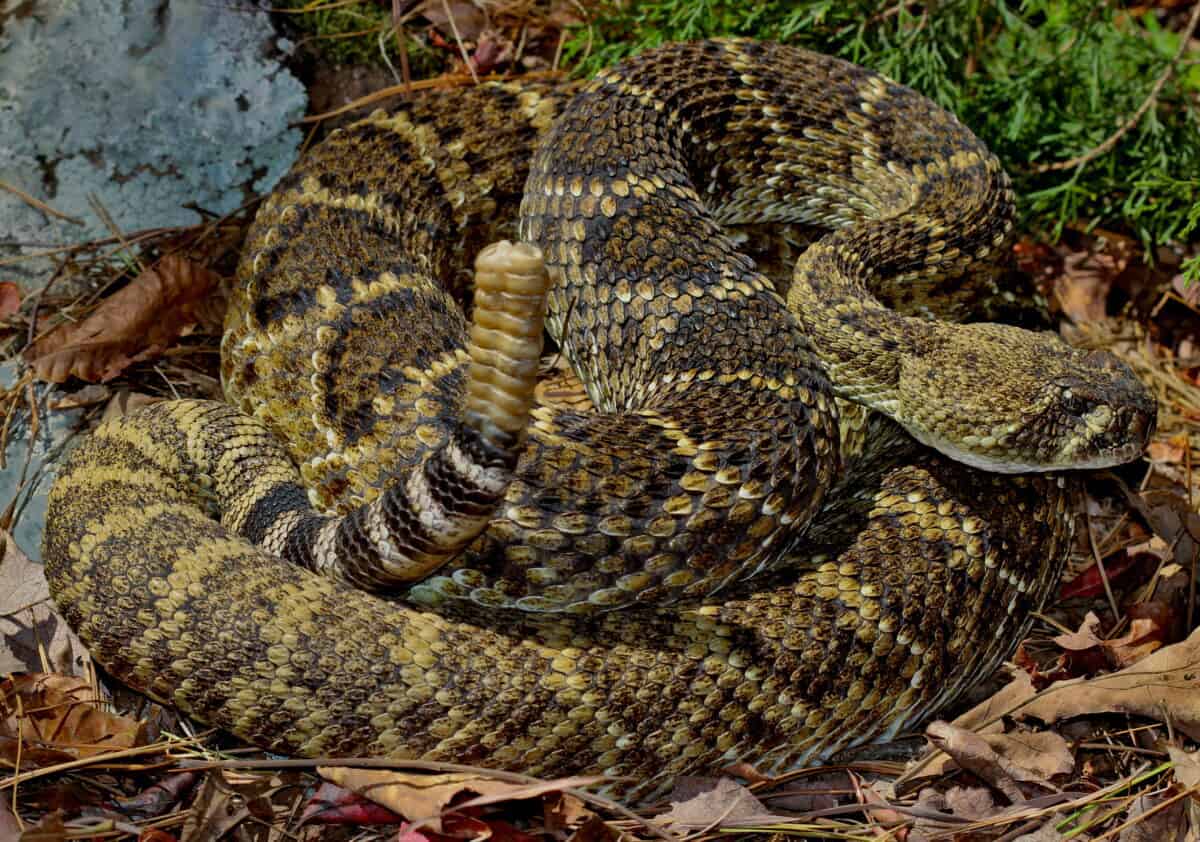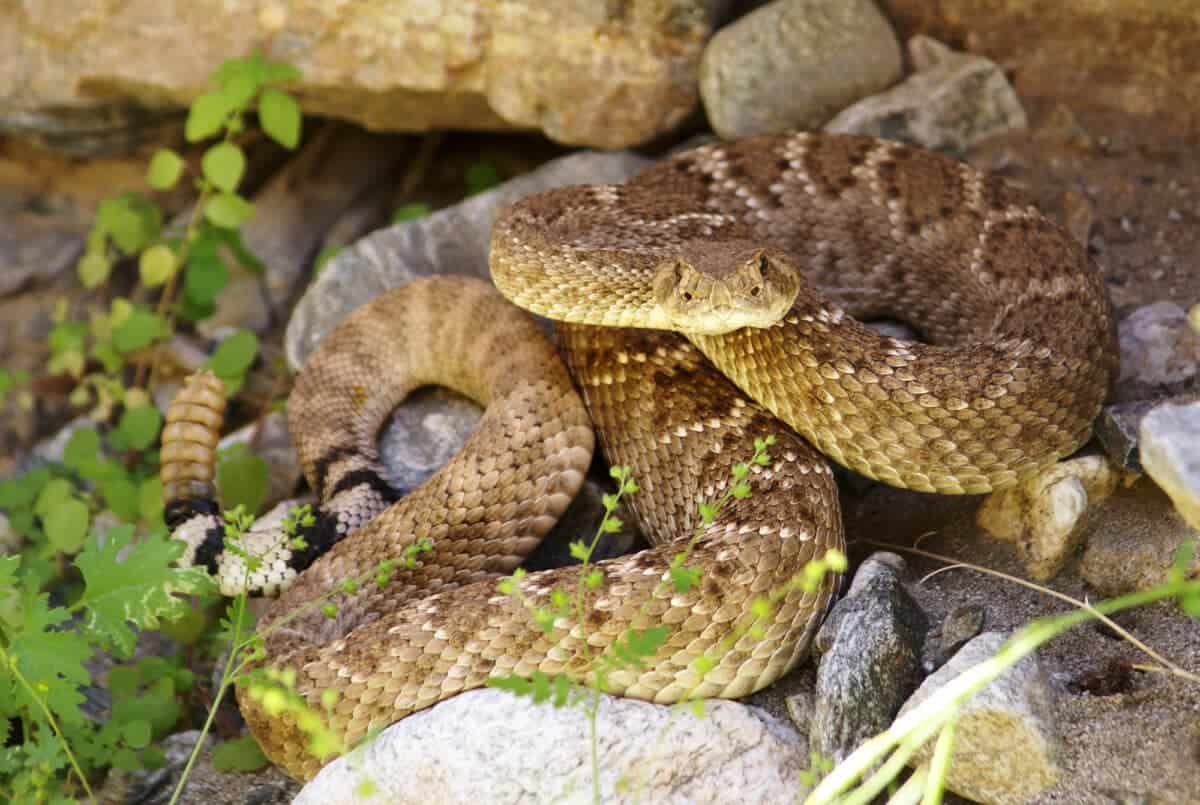As human development continues to expand into previously wild areas, wildlife is forced to adapt or perish. Rattlesnakes, with their fearsome reputation and venomous bite, might seem unlikely candidates for suburban success stories. Yet across North America, these remarkable reptiles are proving remarkably adaptable to life alongside humans. This phenomenon isn’t merely a curiosity—it represents a fascinating case study in rapid ecological adaptation and raises important questions about human-wildlife coexistence in the 21st century. From modified hunting behaviors to altered activity patterns, rattlesnakes are evolving new strategies to thrive in landscapes dominated by humans, driveways, and manicured lawns.
The Encroachment of Suburban Development

Suburban sprawl continues to be one of the most significant drivers of habitat loss in North America. According to research from the U.S. Forest Service, approximately 6,000 acres of open space are converted to developed land daily across the United States. This expansion directly impacts rattlesnake populations, as their native habitats—ranging from desert scrubland to mountain forests—are fragmented or destroyed. Unlike some wildlife species that retreat further into remaining wild spaces, certain rattlesnake species have demonstrated a remarkable ability to persist in these transformed landscapes. The Western Diamondback (Crotalus atrox), Eastern Diamondback (Crotalus adamanteus), and Timber Rattlesnake (Crotalus horridus) are among the species most commonly encountered in suburban areas, particularly in states like Arizona, California, Texas, and Florida.
Behavioral Adaptations for Urban Living

Rattlesnakes living in suburban environments exhibit notable behavioral shifts compared to their wildland counterparts. Research published in the Journal of Wildlife Management has documented that suburban rattlesnakes often become more nocturnal, shifting their hunting and movement activities to nighttime hours when human activity decreases. This temporal shift reduces potentially dangerous encounters with humans and pets while allowing the snakes to utilize suburban resources. Additionally, suburban rattlesnakes have shown increased tolerance for anthropogenic noise and disturbances. A 2019 study from the University of California found that rattlesnakes in developed areas displayed less defensive rattling behavior when approached, suggesting they may be habituating to regular human presence—a remarkable adaptation considering their evolutionary history as ambush predators that rely on remaining undetected.
Habitat Selection Within Suburban Landscapes

Even within developed areas, rattlesnakes demonstrate sophisticated selection of microhabitats that meet their biological needs. GPS tracking studies reveal that suburban rattlesnakes favor property boundaries, undeveloped lots, rock landscaping features, and areas with native vegetation. These spaces provide the thermal regulation opportunities, prey access, and shelter that snakes require. Particularly important are “edge habitats”—transitions between developed and natural areas—which offer the best of both worlds. In Arizona’s Phoenix metropolitan area, researchers found Western Diamondbacks using artificial structures like block walls, irrigation systems, and even swimming pool equipment as substitutes for natural rock crevices and burrows. Such adaptability allows these reptiles to exploit new ecological niches created by human development, turning what might seem like hostile territory into viable habitat.
Dietary Shifts and New Prey Sources

Suburban environments offer rattlesnakes novel food sources that weren’t available in their traditional habitats. While small mammals remain their primary prey, many suburban rattlesnakes have capitalized on rodent species that thrive alongside humans. Roof rats, house mice, and Norway rats—all non-native species associated with human habitation—have become significant food sources for suburban rattlesnake populations. These rodents are often abundant near homes due to easy access to bird feeders, pet food, and improperly stored human food. Some rattlesnake populations have even been documented preying on introduced species like European starlings and house sparrows when opportunities arise. This dietary flexibility represents an important adaptation, as food availability is often a limiting factor for predator populations in disturbed habitats.
Genetic Changes in Urban Populations

Beyond behavioral adaptations, scientists are discovering genetic changes in suburban rattlesnake populations that suggest evolutionary responses to urbanization. A groundbreaking 2020 study published in Molecular Ecology examined genomic differences between urban and rural Western Diamondback rattlesnakes in Arizona. Researchers identified genetic variations associated with metabolism, stress response, and toxin production. Urban snakes showed genetic markers associated with enhanced detoxification pathways—potentially helping them process environmental pollutants—and modified venom composition. While still preliminary, this research suggests rattlesnakes may be undergoing microevolutionary changes in response to selection pressures in suburban environments. The relatively rapid pace of these changes (occurring over just decades rather than millennia) highlights the intense selection pressure that urbanization places on wildlife.
Navigating Fragmented Landscapes

One of the greatest challenges for suburban rattlesnakes is movement across increasingly fragmented habitats. Roads, walls, and other barriers can isolate snake populations, potentially leading to genetic bottlenecks and local extinctions. However, research from the University of Nevada has shown that rattlesnakes utilize novel movement corridors including drainage systems, undeveloped utility easements, and even decorative rock walls to travel between habitat patches. Radio-tracking studies reveal that individual snakes can maintain surprisingly large home ranges even in suburban settings, with some male Western Diamondbacks regularly traversing areas exceeding 25 acres. This mobility is crucial for genetic diversity and allows snakes to access seasonal resources. However, it also increases their exposure to road mortality—one of the leading causes of rattlesnake deaths in suburban areas, with an estimated 50-100 million reptiles killed annually on U.S. roads.
Human-Wildlife Conflicts and Mitigation

Despite their adaptations, rattlesnakes living in suburban environments face significant risks from human encounters. Nationwide, approximately 7,000-8,000 venomous snakebites occur annually, though fatalities are rare (averaging 5-6 per year). More concerning for snake conservation is the number killed preventatively by homeowners—a figure difficult to quantify but estimated in the tens of thousands annually. Communities across the Southwest have developed innovative approaches to reduce these conflicts. In Arizona, several municipalities offer “snake removal hotlines” where trained professionals relocate rattlesnakes from residential properties to nearby natural areas rather than killing them. Educational programs focused on rattlesnake awareness and prevention have shown success in reducing negative encounters. Additionally, “snake-smart” landscaping techniques—avoiding rock piles near homes, removing debris piles, and maintaining clear boundaries between natural and developed areas—can reduce the likelihood of rattlesnakes establishing residence near human dwellings.
Thermal Challenges in the Urban Heat Island

As ectotherms, rattlesnakes rely on environmental temperatures to regulate their body temperature—a challenge in suburban environments affected by the urban heat island effect. Studies show that urban centers can be 2-12°F warmer than surrounding rural areas due to concrete, asphalt, and reduced vegetation. For rattlesnakes, this creates both opportunities and challenges. In desert regions, suburban landscapes may offer more shade and water resources than natural habitats, potentially extending activity periods. Conversely, extreme summer temperatures can create thermal stress for snakes unable to find adequate shelter. Research from Arizona State University has documented suburban rattlesnakes utilizing irrigation systems and swimming pools for hydration during extreme heat events—an opportunistic behavior rarely seen in wild populations. Some species show modified daily activity patterns, becoming briefly active during pre-dawn hours when temperatures are cooler, a behavioral adaptation not observed in wilderness populations.
Reproductive Adaptations in Suburban Settings

Reproduction represents a vulnerable period for female rattlesnakes, particularly in suburban environments. Unlike many egg-laying snakes, rattlesnakes are ovoviviparous—they retain eggs internally until giving birth to live young. This reproductive strategy requires females to find secure basking locations for several weeks. In suburban settings, pregnant females show remarkable adaptability in finding suitable birthing sites. Researchers have documented rattlesnakes using abandoned rodent burrows beneath sheds, spaces beneath concrete patios, and even mulch piles in gardens as birthing dens. A 2018 study in the Journal of Herpetology found that female Timber Rattlesnakes in suburban Pennsylvania selected birthing sites significantly closer to human structures than non-pregnant females, apparently exploiting the thermal benefits of these locations. This suggests that artificial structures might actually provide reproductive advantages in some contexts, though the young snakes face increased mortality risks when dispersing through developed areas.
Seasonal Patterns and Winter Survival

Winter survival presents particular challenges for rattlesnakes in suburban areas, especially in temperate regions where they must brumate (the reptile equivalent of hibernation) for several months. Traditional communal hibernacula—natural underground cavities where dozens or even hundreds of snakes might overwinter together—are often destroyed by development. However, suburban rattlesnakes have shown remarkable flexibility in finding alternative winter refuges. Foundation cracks, spaces beneath decks, deep mulch beds, and even abandoned mammal burrows serve as substitutes. In some cases, the thermal properties of human structures provide advantages: south-facing rock walls and foundations absorb and radiate heat, potentially extending the active season by weeks compared to natural habitats. A long-term study in Connecticut documented Timber Rattlesnakes successfully using artificial hibernacula created when old building foundations were partially buried—these structures provided better insulation and freeze protection than many natural sites, resulting in higher winter survival rates.
Conservation Implications and Management Strategies

The adaptability of rattlesnakes to suburban environments has significant conservation implications. Of the 36 rattlesnake species found in North and South America, approximately one-third are considered threatened or endangered. Their ability to utilize suburban habitats might provide population buffers for some species, particularly as climate change further stresses natural habitats. Conservation biologists are increasingly advocating for “coexistence strategies” that allow rattlesnakes to persist in suburban interfaces without creating undue risk to humans. These include habitat corridors connecting natural areas, educational programs promoting tolerance, and snake-smart development practices. Multiple municipalities in Arizona, California, and Texas have implemented rattlesnake management plans that include preserving critical habitat within developed areas, installing snake-specific road crossings, and creating designated relocation zones for snakes removed from residential properties. These integrated approaches recognize that complete separation of humans and rattlesnakes is neither possible nor ecologically desirable in many regions.
The remarkable adaptability of rattlesnakes to suburban environments represents both a conservation success story and an ongoing experiment in human-wildlife coexistence. As these serpents continue to evolve behavioral, physiological, and potentially genetic adaptations to human-dominated landscapes, they challenge our assumptions about wildlife adaptation and resilience. The future of suburban rattlesnake populations will depend largely on human tolerance, informed management practices, and our willingness to share landscapes with species that inspire both fear and fascination. With thoughtful planning and increased ecological understanding, it’s possible to maintain viable rattlesnake populations even as development continues—providing ecological services like rodent control while preserving an iconic element of North American biodiversity. The rattlesnake’s suburban journey offers valuable lessons about wildlife adaptation in the Anthropocene and reminds us that even our most misunderstood neighbors can find ways to persist alongside humanity if given the opportunity.
- How Rattlesnakes Are Adapting to Suburban Living - August 11, 2025
- Why Some Fish Can Walk Across Dry Land - August 11, 2025
- 12 Signs Your Dog Is Struggling with Weather Changes - August 11, 2025

